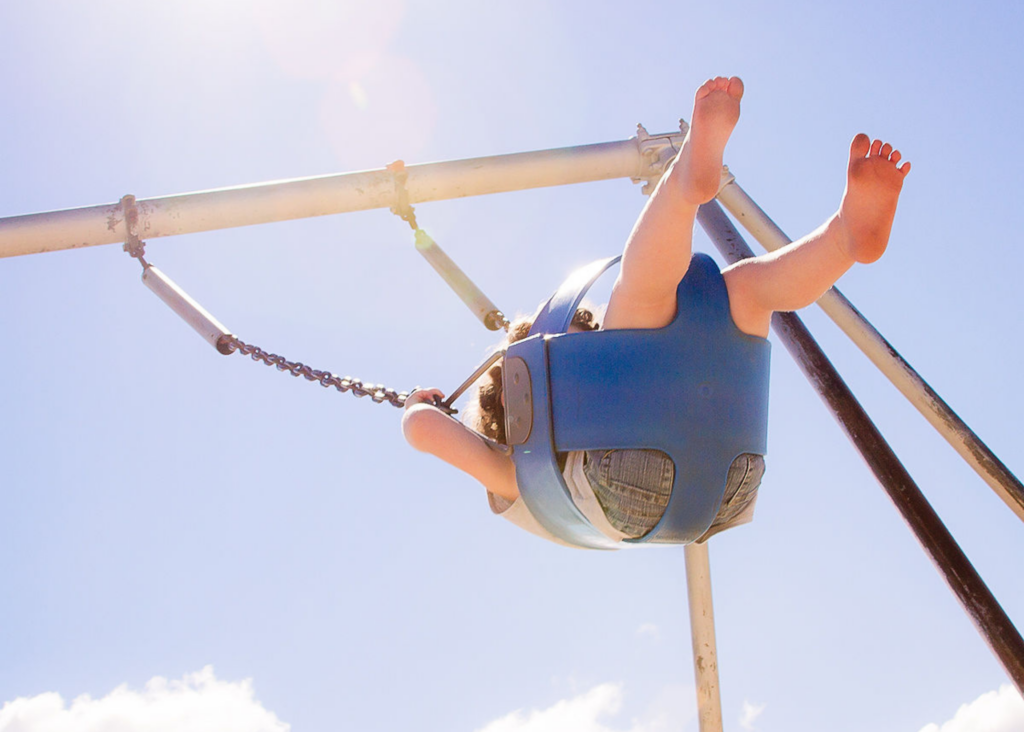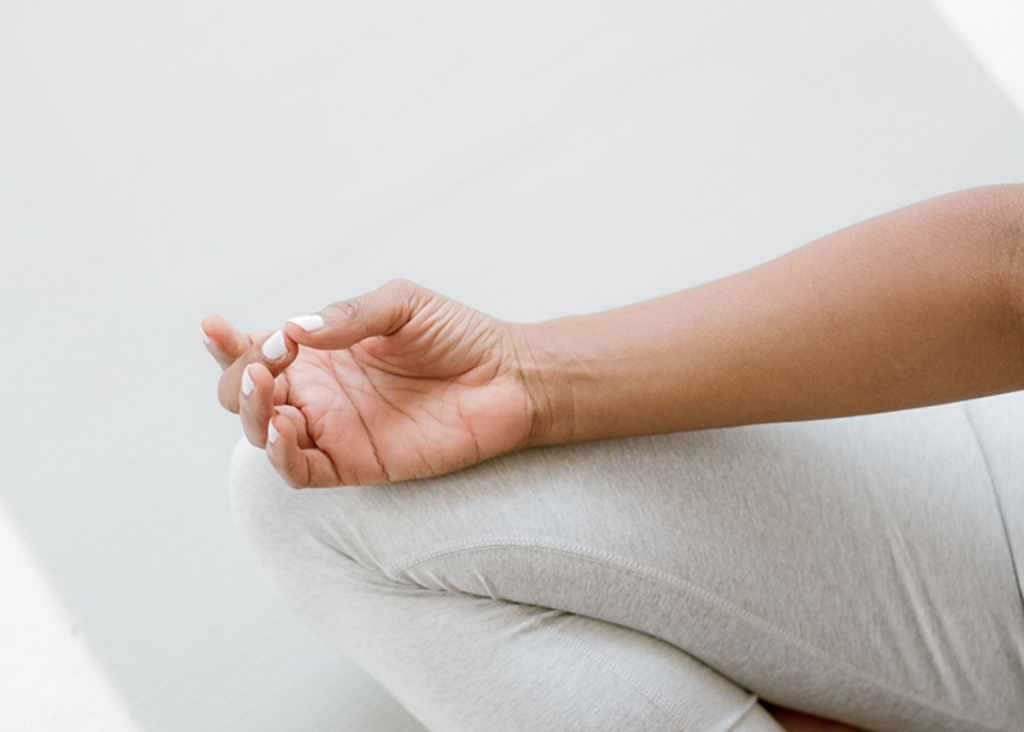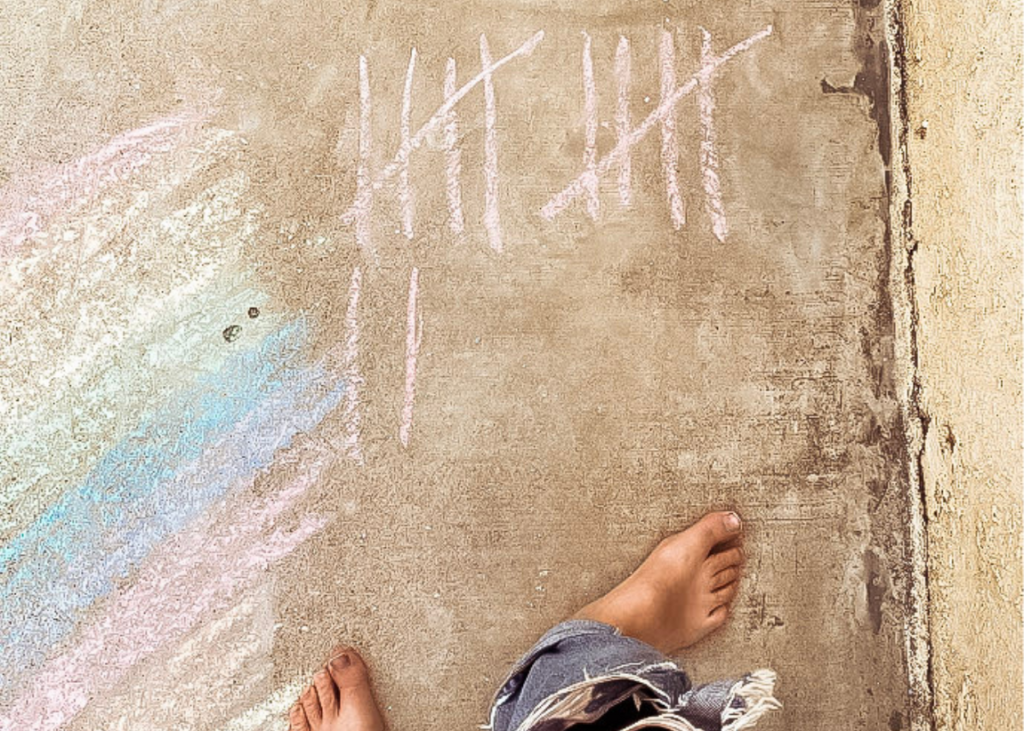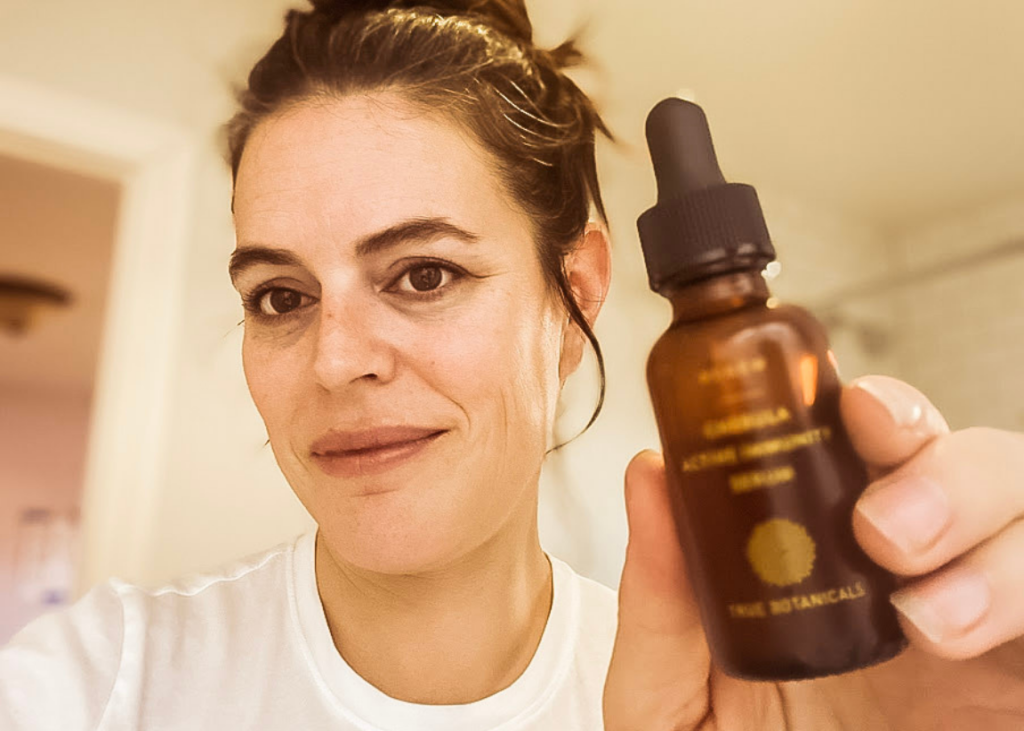8 Steps to Building Better Habits
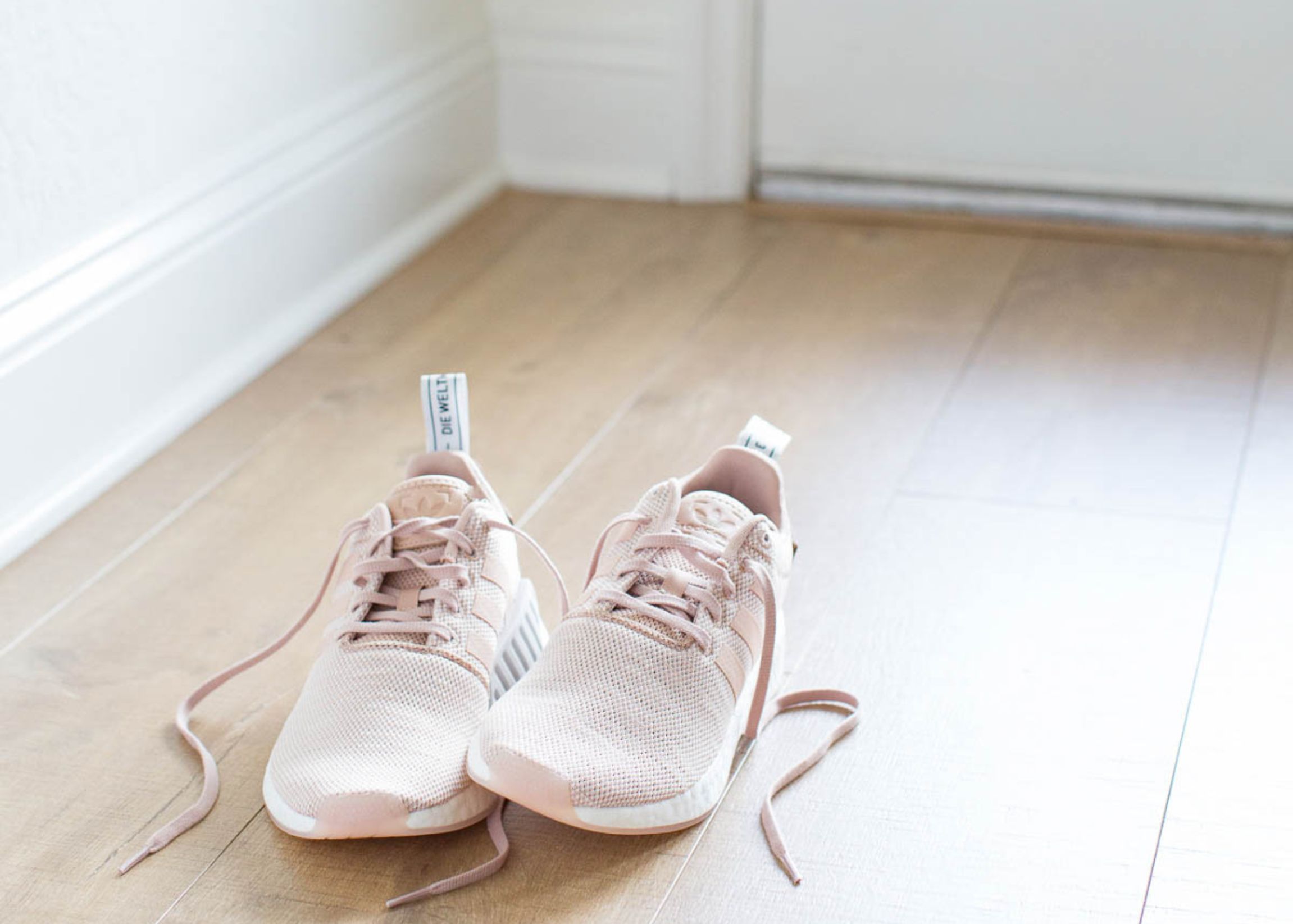
As I write this, I feel that familiar ache in my lower back. Maybe you know it. Years of carrying babies, then toddlers, and now little kids combined with not enough sleep, a few extra pounds, and not nearly enough exercise (and of course, aging. Although, I don’t want to admit that) have left me with a near daily backache.
And, I know what to do about it. It’s simple. Sit in a better chair during my work day, see my chiropractor a few times a month, and do a bit of yoga each day. So easy. And yet, I’m not doing it.
Why?
Well, I think you know what I would say if you asked me. “Not enough time.”
When I reflect on this, I think, is there enough time to be in pain? No. Of course not.
So, why am I using “not enough time” as an excuse to take care of myself? And what happened to my years-long, near-daily yoga practice?
I imagine it went the way of many self-care habits, once I had kids. A day goes by, and I forget. Then another, maybe two more. I try to do it but a little one is climbing on my back during plank and playing baby elephant during downward dog. Maybe savasana looked a little like this:
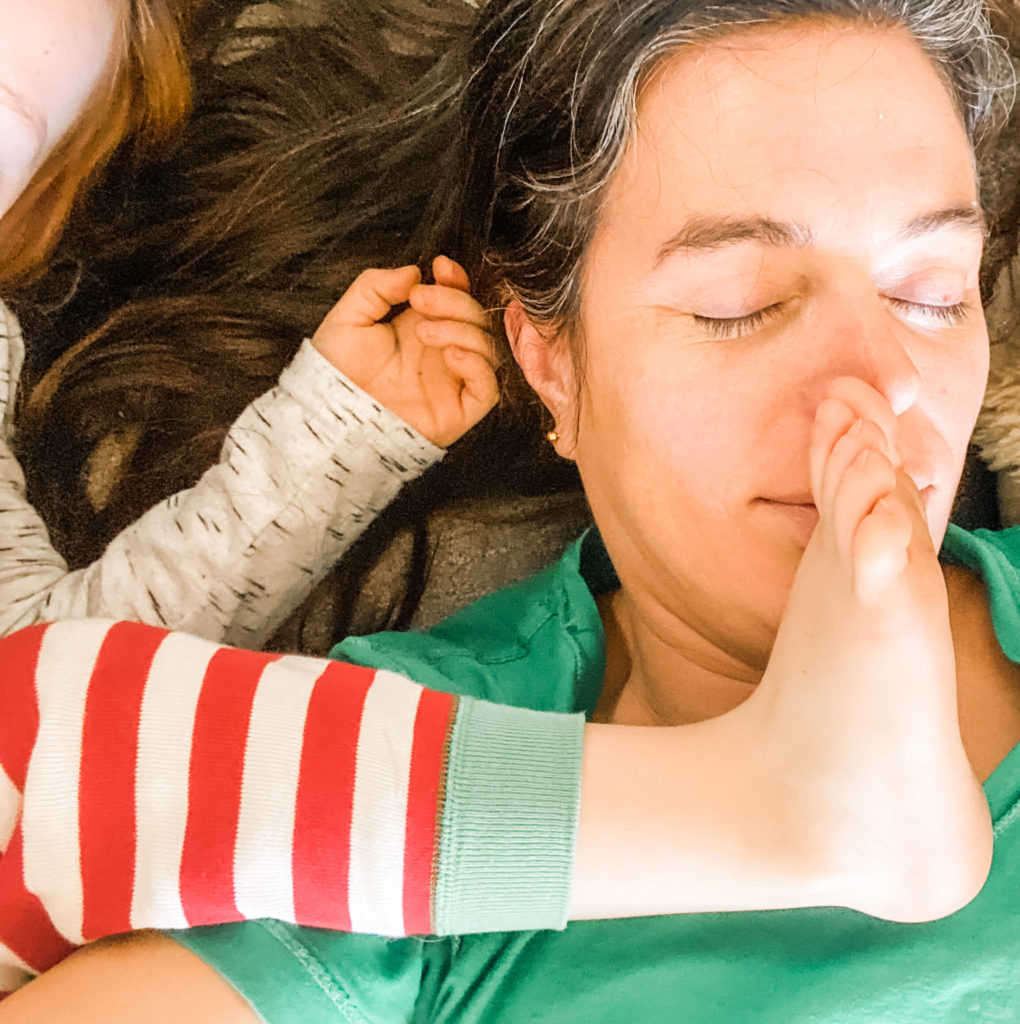
We collect bad habits with absolutely no effort at all. We lose our best habits just as easily. We get interrupted, think it’s not worth it or, “I’ll do it tomorrow.” A few days go by, then weeks, and the habit is gone.
Building good habits can be a little more challenging, even with the best intentions.
As I begin to rebuild my desperately needed yoga practice (who has time for constant pain?), I’m spending time considering how to build habits. True habits, the kind that we do automatically, without a thought, like brushing our teeth.
8 Steps to Building Better Habits
1. Decide What You Want To Do
And be super specific.
One of the reasons building better habits is difficult is because we aren’t exactly clear on what we want to do.
The first step is to be very specific about your new habit. This isn’t “I want to exercise more.” This is, “I am going to do 30 minutes of yoga each morning before the kids wake up, 4 days a week.”
The specificity removes any doubt. You know what you are going to do, when you are going to do it, how often, and why. Which brings us to step 2:
2. Get clear on Why
There is no reason to build and keep a habit without clarity on why. Why do we brush our teeth every day? Because morning breath is offensive and we’ve all seen what happens if we don’t.
Your why doesn’t need to be as extreme as a mouth full of rotten teeth, but the clarity will help you stay motivated when you just don’t feel like it.
My why? I like how I feel after I’ve done a morning yoga session. It brings a bit of peaceful energy into my day. I also recognize how valuable a few quiet moments to myself are (although this doesn’t help build the habit). Mostly, I remind myself that the stronger my body is, the less likely I am to be in pain. Oh, and I have a beach vacation coming up in a few months.
Get clear on your why and you’ll have an easier time motivating.
3. Schedule and Set Reminders
Starting a habit is easy. You wake up, excited and hit the yoga mat. The next day, you do the same. But, a week in, and it is so much easier to sleep for a bit longer. You need the sleep right?
Schedule your habit into the rhythm and routine of your day and then set reminders. I have an alarm labeled “yoga practice. DO IT!” It goes off at 6:30 and when I’m not in the mood (most days), I see that reminder and I do it. Most days.
Put a post-it on your mirror, write it in your planner, set an alarm, whatever you can do to make it easy to remember your habit.
4. Create Cues
They say that the best way to make flossing a habit is to put the floss right next to your toothbrush so you have a visual reminder every day.
While I’m establishing this habit, I’m leaving my yoga mat out. Yes, it’s in the way. Yes, it’s a bit unsightly. But, I’m ok with that for now. It is a physical reminder of a habit I’m building.
Your cues don’t need to be visual (but putting your workout clothes right next to your bed or a post-it that says “meditate” on your nightstand will help!). You can create time cues or place cues as well. The anchors in your day, like mealtimes, sleep and wake times, and returning from school or work, can all be cues.
This works especially well when building habits with our little ones. You see it in action when you come home from school and work. We walk in the door, I spend a few minutes tidying up, the kids play independently for a bit, I start cooking, they set the table, we eat.
Bedtime habits are built the same way. Dinner is over, we clean up, start on jammies, all the way to stories and bed.
Everyone is on the same page, it is part of the rhythm of the day and our rhythm gives us cues to do the next thing.
5. Make it Fun
Well… at least as fun as possible. We are much more likely to stick to a habit if we enjoy it (obviously), but we forget to inject fun or play into our habit building.
Sing songs with your little ones as you build the habit of clearing the table. Listen to your favorite podcast while you’re working out. Reward yourself with an hour of your favorite show while you’re on the treadmill.
6. Be Flexible and Forgiving
Once we’ve built a habit, it’s easy. We don’t even think about it anymore. But in the early stages, we may not be as consistent. Something gets in the way, we forget, we have an early conference call during the time we usually practice yoga, we oversleep. And, we skip it. And soon, we’re out of the habit once again.
If we can be a little flexible with ourselves, maybe working a quick yoga session into a lunch break or after dinner, we are more likely to follow through.
And of course, there will be days when we just can’t do it. Being forgiving (and motivated to jump back in) can help us continue to build the habit. Allowing a skipped day, here and there, without getting down on ourselves or discouraged can be the difference between a lifelong habit and one that ends just as it’s building momentum.
7. Find support
Good habits are contagious. Surround yourself with people who already have the habit you want to build, if possible. Join a running club, set up a lunch date to learn a new skill, ask a friend to hold you accountable…. which is what I’m doing here. I’m telling you about my yoga practice, so now, I need to do it, right?
When you find the right support and work on building a habit with others, it will usually make it more fun as well.
Want a little accountability or support? Email me. I’d love to be your cheerleader!
8. Track it
After the birth of my second baby, I completely lost my mindfulness practice. About 3 months in, when I’d recognized that postpartum anxiety and rage were getting the better of me, I knew getting my meditation practice back would help.
But, I struggled to make it a habit. Those newborn days aren’t exactly ideal for building habits. I knew I needed not only a visual reminder, but a way to track the habit. It felt good to check the day’s meditation off and motivated me to keep going.
So, I created a habit tracker with a space for getting clear on your why, writing down your specific habit, and notes on scheduling it, as well as 2 months of habit tracking.

